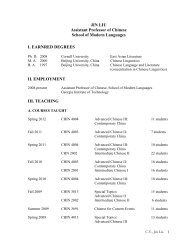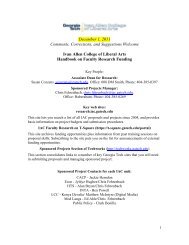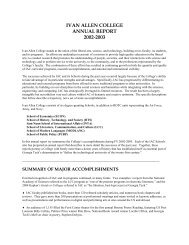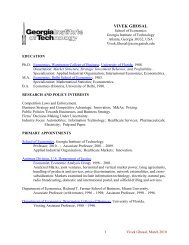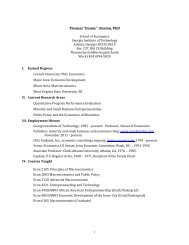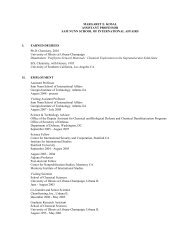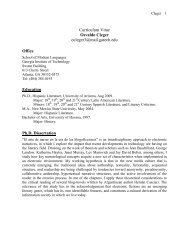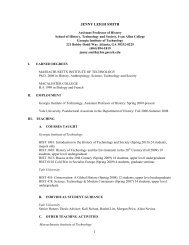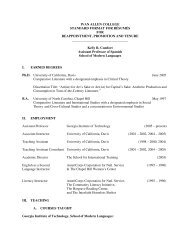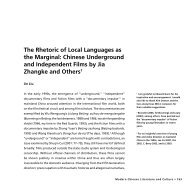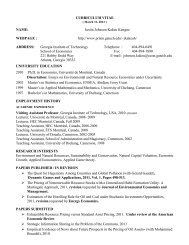Atlanta Housing - Georgia Institute of Technology
Atlanta Housing - Georgia Institute of Technology
Atlanta Housing - Georgia Institute of Technology
You also want an ePaper? Increase the reach of your titles
YUMPU automatically turns print PDFs into web optimized ePapers that Google loves.
assistance between 2004 and 2010. The quantitative analysis was supplemented with focus<br />
group interviews.<br />
The research found that the impact <strong>of</strong> Grady revitalization enhanced the attainment <strong>of</strong> AHA’s<br />
CATALYST goal. The empirical evidence <strong>of</strong> this was documented by the following outcomes:<br />
Finding 1<br />
Evidence<br />
AHA significantly expanded and improved the housing choices and quality <strong>of</strong><br />
neighborhoods that low income families had access to by replacing LIPH<br />
developments (such as Grady Homes, University Homes, Antoine Graves, and<br />
Antoine Graves Annex) with affordable units in mixed-income developments,<br />
Project Based Rental Assistance (PBRA), <strong>Housing</strong> Choice Vouchers (HCV), and<br />
Supportive <strong>Housing</strong> opportunities.<br />
In 2004, the baseline for this evaluation, AHA had in its inventory 18 low income<br />
public housing family developments (LIPH), 9 mixed-income revitalized<br />
developments and 5 project based rental assistance properties (PBRA). By 2010<br />
all but 2 LIPH family developments were demolished, 20 mixed-income<br />
developments existed and PBRA was provided at 25 different properties.<br />
In 2004, 4,527 AHA householders lived in LIPH family developments and 2,754<br />
lived in LIPH senior developments. By 2010, only 90 householders lived in LIPH<br />
family developments and 1,875 lived in LIPH senior developments.<br />
In 2004, 457 householders lived at Grady Homes. By 2010 those same<br />
householders had relocated as follows: 75.6% used tenant based vouchers, 9.6%<br />
lived in PBRA family developments, 8.9% lived in mixed-income family<br />
developments, 3.0% lived in PBRA elderly developments, and 2.2% lived in<br />
mixed-income elderly developments<br />
In 2004, there were 1,262 householders who lived in all four properties affected<br />
by Grady Revitalization, 75.4% <strong>of</strong> those householders lived in LIPH family<br />
developments and 24.6% lived in LIPH elderly developments. By 2010, only .3%<br />
lived in LIPH family developments and 1.9% in LIPH elderly developments. In<br />
contrast, 68.4% used tenant-based housing vouchers, 7.3% lived in mixedincome<br />
family developments, 6.6% used project based vouchers in family<br />
4 | P a g e



